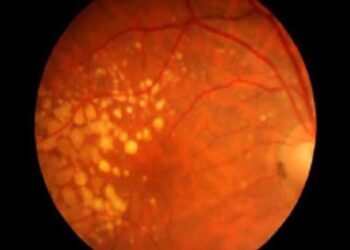TOPLINE:
More than 75% of chronic hepatitis B diagnoses in the United States occur late — within 2 years before or after the onset of a liver complication — highlighting the need for improved screening to prevent poor outcomes.
METHODOLOGY:
- Late diagnosis of chronic hepatitis B represents a missed opportunity to intervene early and prevent liver-related complications.
- Researchers conducted a retrospective analysis of the Truven MarketScan database (2007 to 2021) to estimate the prevalence of late diagnosis of chronic hepatitis B in the US and associated liver complications.
- Eligible patients had chronic hepatitis B diagnosis and at least 12 months of insurance coverage prior to the first liver complication (cirrhosis, hepatocellular carcinoma [HCC], or liver transplant).
- A diagnosis was defined as late if it occurred within 2 years before or after the first liver complication, and non-late if was made more than 2 years before the complication.
TAKEAWAY:
- Of 2608 patients included (mean age, 54.83 years; 29.7% women), 76.6% had a late diagnosis of chronic hepatitis B; among these, 44.5% were diagnosed at or within 6 months of their first liver complication, and 75.5% lacked a documented visit to a medical provider prior to their first liver complication.
- Among those diagnosed > 36 months after the first liver complication, 46% already had another liver disease.
- Despite treatment advances, the rate of late diagnosis remained stable between 2010 (78.8%) and 2019 (89.3%; P for trend = .438).
- Among patients with a late diagnosis, 91.0% had cirrhosis, 81.5% had decompensated cirrhosis, 30.8% developed HCC, and 14.4% underwent liver transplant.
- Independent predictors of late diagnosis included male sex, alcohol use, and having Preferred Provider Organization (PPO) or Health Maintenance Organization/PPO hybrid insurance.
IN PRACTICE:
“Our study suggests that the majority of [hepatitis B virus] diagnoses in the United States are likely incidental from the work-up of a liver complication. These patients can be seen as ‘missed opportunities’ for treatment and intervention to prevent disease progression and adverse hepatic outcomes,” the authors wrote.
SOURCE:
This study was led by Michael Le and Joanne K. Liu, Stanford University Medical Center, Stanford, California. It was published online in Alimentary Pharmacology & Therapeutics.
LIMITATIONS:
This study excluded uninsured individuals and those covered by government insurance (eg, Medicaid), potentially underrepresenting higher-risk populations. Reliance on claims data may have affected the accuracy of diagnosis rates. Data on race, ethnicity, and foreign-born status were unavailable, preventing analysis of these important factors.
DISCLOSURES:
The authors received no specific funding for this work. No conflicts of interest were disclosed by the authors.
This article was created using several editorial tools, including AI, as part of the process. Human editors reviewed this content before publication.
Source link : https://www.medscape.com/viewarticle/most-chronic-hepatitis-b-diagnoses-us-are-late-2025a1000fv9?src=rss
Author :
Publish date : 2025-06-13 07:17:00
Copyright for syndicated content belongs to the linked Source.














